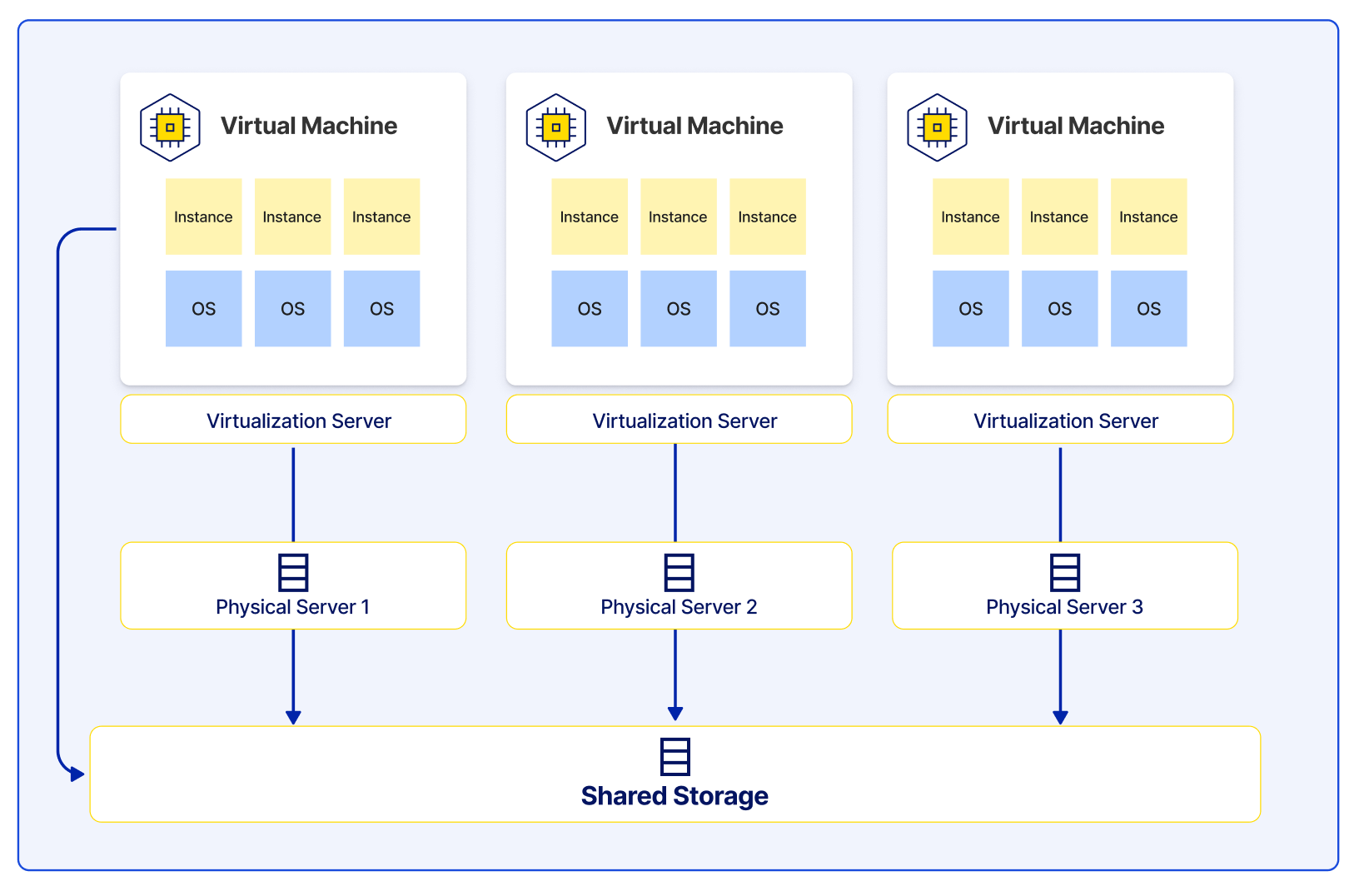Architecture
Virtual Machine (VM) of KakaoCloud uses software-based virtual instances to borrow CPU, memory, and storage from physical host computers, as illustrated in the diagram below.
The VM architecture is based on virtualization technology to configure the cloud infrastructure. This architecture comprises various elements, including virtual machines, physical servers, Shared storage, and virtualization servers.
This VM architecture allows for efficient use and management of physical hardware resources through virtualization technology. Virtual machines operate individually, and multiple virtual machines can run simultaneously on several physical servers. Moreover, resource allocation and management can be flexibly adjusted, enabling the modification of the number of virtual machines and their resource allocations as needed. This facilitates efficient server management and operation, providing flexibility and scalability to IT infrastructure.
 VM Architecture
VM Architecture
| Component | Description |
|---|---|
| Virtual Machine | Virtual servers, operating virtualized operating systems on physical servers - Each virtual machine can independently run its operating system and applications. - Allocated virtual resources separate from physical servers. |
| Physical Server | Servers comprised of actual hardware, including physical resources like CPU, memory, disks |
| Shared Storage | Storage resources shared by multiple physical servers - Virtual machines store and access data through this shared storage. - This enables multiple virtual machines to access and share the same data. |
| Virtualization Server | A server running virtualization software - Executes virtualization software on physical servers to create and manage VMs. - Uses a hypervisor to simultaneously run multiple virtual machines, separating and allocating resources among them. |